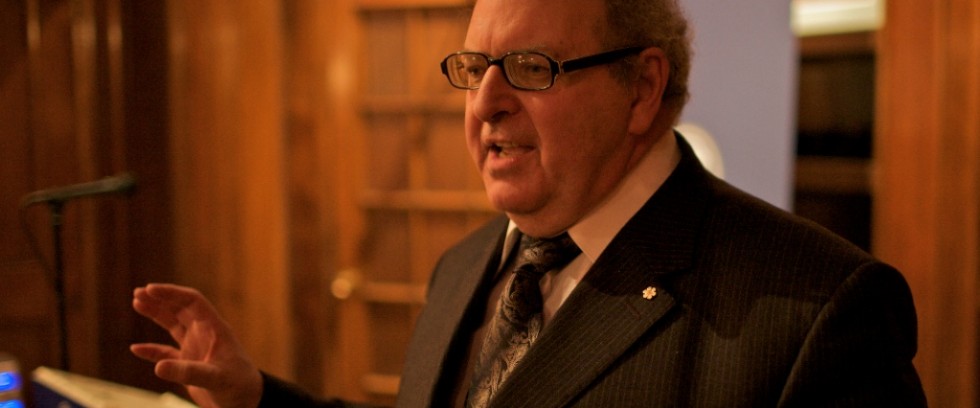
By Megan Carroll and Liam McHugh-Russell
How can we measure whether a government works? Good policy is important. Accountability is certainly part of the answer. Yet ultimately, government which works is government which acts; it is government which, in short, gets things done. And increasingly, there is a gap between policy and its implementation – between what government attempts to put into action, and what it actually accomplishes. On January 19th, the Sauvé community was honored to welcome Dr. Thomas Axworthy to discuss public service, the implementation gap, and the future of effective government. Dr. Axworthy spoke at the core of his bailiwick: a prominent Canadian civil servant, writer and professor. He served for many years in government, most notably as the Principal Secretary and Chief Speechwriter to Prime Minister Pierre Trudeau, and is currently the President and CEO of the Walter & Duncan Gordon Foundation.
Dr. Axworthy moved to the Gordon Foundation from a position as Chair of the Centre for the Study of Democracy (CSD) at Queen’s University. At Sauvé House, he tied together the CSD’s work on democracy and the media, the role of parliament – and his personal work on the reform of parties – to the findings in the most recent CSD report on the implementation gap itself, founded on an analysis of survey results of young and senior public servants as well as Queen’s University public policy graduates and recruits.
That report – and Dr. Axworthy’s presentation – shed light on the workplace reality and challenges facing Canada’s public servants, while tying those challenges to larger global trends. He gave a characteristic tour-de-force presentation on changes to the professional culture of the public service, its causes, and its implications. At the core of his presentation was a sense of a reciprocal relationship between the effectiveness of the public service, undue political pressure in policy implementation (experienced by 51% of those working on contracts and procurement), and the high level of on-the-job stress experienced by public servants. Young public servants face a lack of mentorship and significant turnover in supervisors. Dr. Axworthy cited that 31% of the survey sample had three supervisors in three years. This “unrelenting change and ‘merry-go-round’ has public policy implications” as it hinders the ability of public servants to get their job done. Furthermore, the survey found that 37% of respondents are “very” or “somewhat stressed,” which amounts to one of the highest stress rates in any Canadian industry. Another barrier to creating an engaged workforce, impeding the production of policy: 38% indicated little chance for career development and mentoring. The result: a staggering 51% were “seriously thinking about leaving the public service.” Dr. Axworthy noted that filling positions could present enormous implications in terms of recruitment and retention, especially given issues of stress and the absence of work/life balance.
Responding to these findings, Dr. Axworthy concluded with some welcome recommendations, arguing that public service reform needs to be a top agenda item for Canadian politicians. He stressed the importance of operationalizing longer assignments to counter the “merry-go-round” of staff and build up specific policy expertise, not just management skills.
Underscoring a direct connection between stress levels and performance, he suggested the creation of a Task Force to create accountability guidelines, and suggested training as well as a published ethical code for political staff, who play an increasingly important, but currently unclear role in policy implementation. Finally, he suggested that needed attention on implementation could be achieved through a “Results Unit,” making it a more regularly reviewed part of the policy system.
Dr. Axworthy responded to audience questions with thoughtfulness, charm and brio. Without missing a beat, he clarified that he thought political staff should be treated more like public servants, and not receive special treatment. He argued that “results” could be reviewed without founding all outcomes on quantitative measures. He suggested ways in which governments could collaborate on public service reform.
Ultimately, the questions allowed him to end the discussion of a quite discouraging reality with a hopeful spirit: “I believe in government as a force for good. No matter how much you think government should do, no one believes that it shouldn’t be done well.” To watch the conference, click here.
